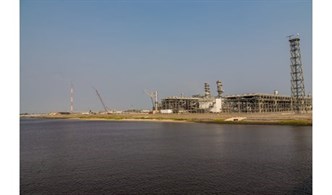Wärtsilä power plant coupled to LNG terminal in Antigua could become model for other Caribbean utilities (1)
The technology group Wärtsilä has been awarded the contract to supply and install a 46 MW dual-fuel power plant to the Caribbean Island of Antigua. The engineering, procurement and construction (EPC) order was placed by Antigua Power Company Limited (APCL), an independent power producer. The order was entered into Wärtsilä’s order book in January 2022. The plant will operate primarily on regasified LNG.

The project combines a power plant and an LNG gas terminal, storage and regasification facility. APCL won the bid for this project on an international tender held by the tender board of Antigua and Barbuda on behalf of the Antigua Public Utilities Authority (APUA). The LNG gas terminal project is being developed by U.S.-based Eagle LNG in equal partnership with APCL, with APUA as the gas purchaser. The project involves installation of a small-scale LNG storage and regasification terminal which will supply the fuel for the new power plant.
The island of Antigua and Barbuda has taken the lead in utilising environmentally sustainable fuel for power generation, and this will be the first project of its kind in the Eastern Caribbean region where an LNG terminal will be coupled to a Wärtsilä power plant. This integrative plant concept is expected to become a model for other island utilities in the Caribbean as the acceptance of LNG fuel increases in line with efforts to reduce emission levels. Wärtsilä has an installed base of power plants in the region with a combined capacity of more than 3300 MW
“There is a need to provide additional generating capacity along with the island’s growth in demand for electricity. At the same time, some of the existing power production facilities would soon need to be replaced due to age and the increased focus on more environmentally sustainable systems. Having had good experience with Wärtsilä in the past, we see their dual-fuel power plant solution as the best answer to the island’s green energy plan and its current and future energy requirements,” explained Mr Aziz Hadeed, head of the Hadeed Group of Companies, the parent company of APCL.
Jon Rodriguez, Director, Power Plants, North America, Wärtsilä Energy responded by saying: “The integration of this new power plant with an LNG terminal is a clear demonstration of Wärtsilä bringing its technological know-how and experience to assist its customers in making use of more environmentally sustainable fuels. We have earlier carried out four successful projects with APCL and we are delighted to have again been selected for this important project. I believe it comes as an endorsement of both the Wärtsilä technology and the sales support capabilities we have throughout the Caribbean.”
The plant will operate with five Wärtsilä 34DF dual-fuel engines capable of operating with both gas and light fuel oil. This flexibility is combined with high efficiency across the entire load range. The fast-starting capability means that the engines can reach full power within five minutes, enabling them to provide efficient grid balancing capacity as the adoption of renewable energy from wind and solar increases. Notably, these engines could be an ideal platform for future decarbonisation strategies by making use of carbon free fuels, such as hydrogen and ammonia.
The plant is expected to become operational in Q3, 2023. It will supply electricity to APUA for distribution to the national grid. The decision to use regasified LNG, the cleanest of all fossil fuels will result in about 40% less carbon production and is in step with the Government of Antigua and Barbuda and APUA’s plan to reduce its environmental footprint.

- ADNOC Gas awards $2.1 B in contracts to enhance LNG supply infrastructure
- U.S. Department of the Treasury releases final rules for clean hydrogen production tax credit
- Tecnimont to build waste-to-biogas plant to fuel local kitchens in India
- Indonesia regulator confirms disruption at bp's Tangguh LNG project
- Topsoe, Aramco sign JDA to advance low-carbon hydrogen solutions using eREACT™



Comments